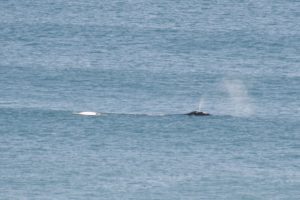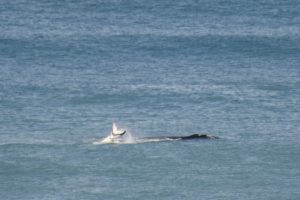The De Hoop Nature Reserve consist of two parts, one is the land which hosts Zebras, several types of Boks (Springbok and the rare Buntebok) and Ostriches, the other part is the adjoining Marine reserve.
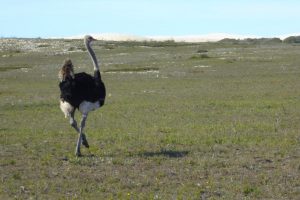
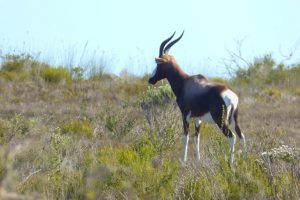
Driving the dust road towards the coast, one overlooks the river Soutrivier which ends in the De Hoopvlei. The park features overnight stays in cottages and manor house as bed-and-breakfast.
The most stunning view is the Sand dunes seperating the two parts of the park, sticking out bright in the afternoon sun.
There’s small cottages on the hill closer to the coast.
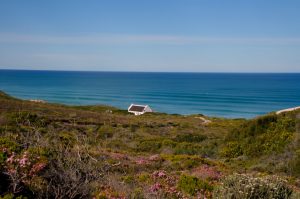
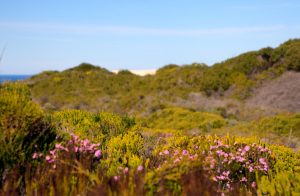
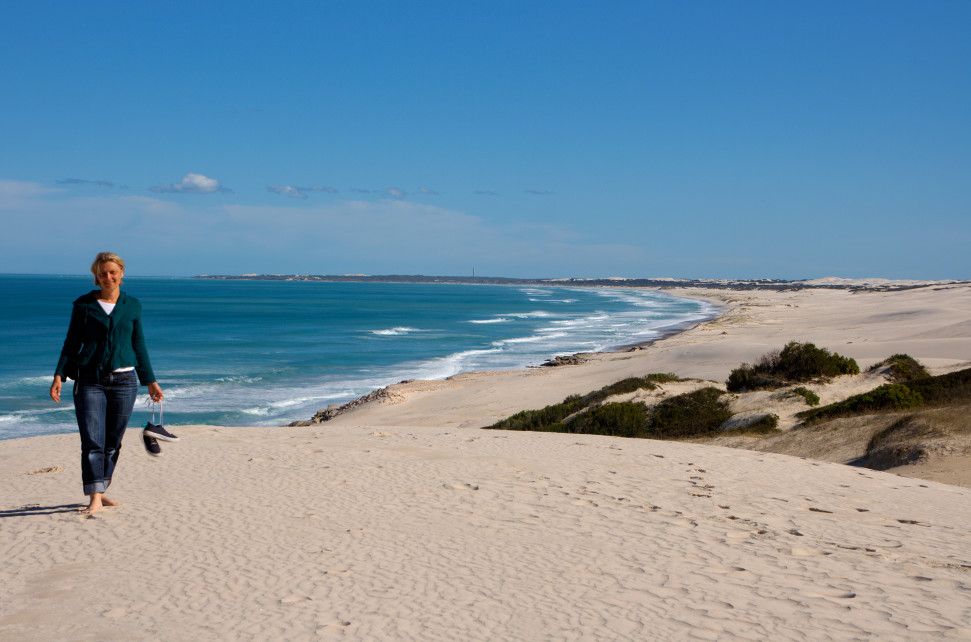
We had a blast, Jonathan was excited to run bare-foot in the sand.
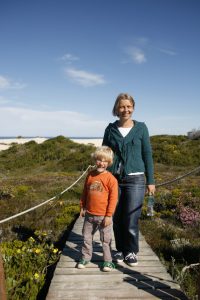
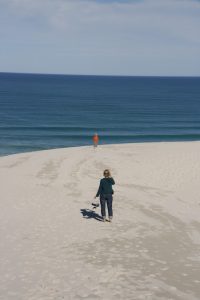
Together we ran down towards the ocean and up and down again.
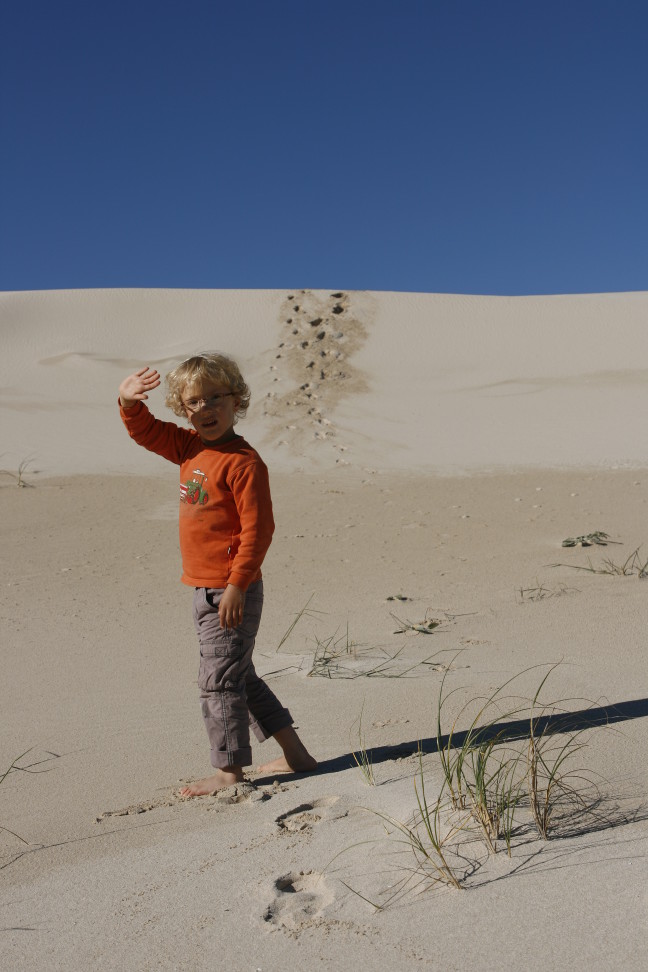
What these pictures do not convey is size and vastness of the landscape. We ran about 300m down the hill, about 60m down:
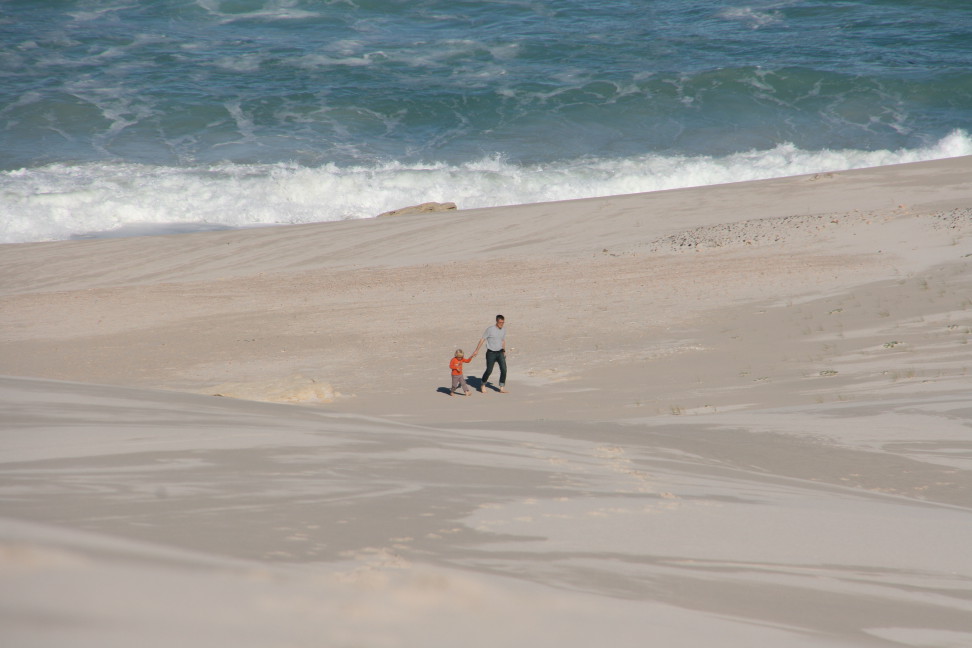
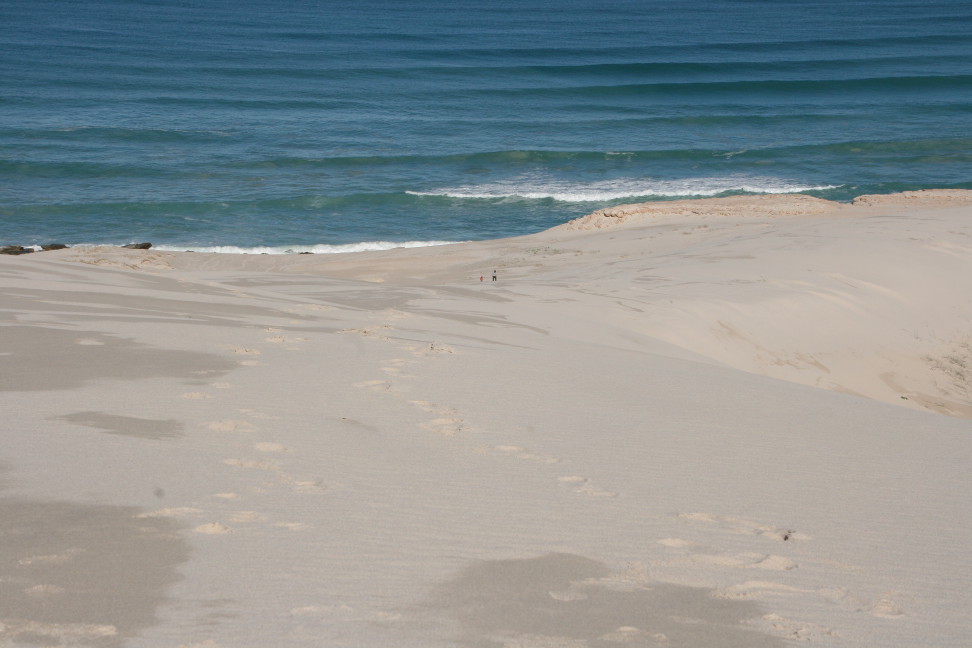
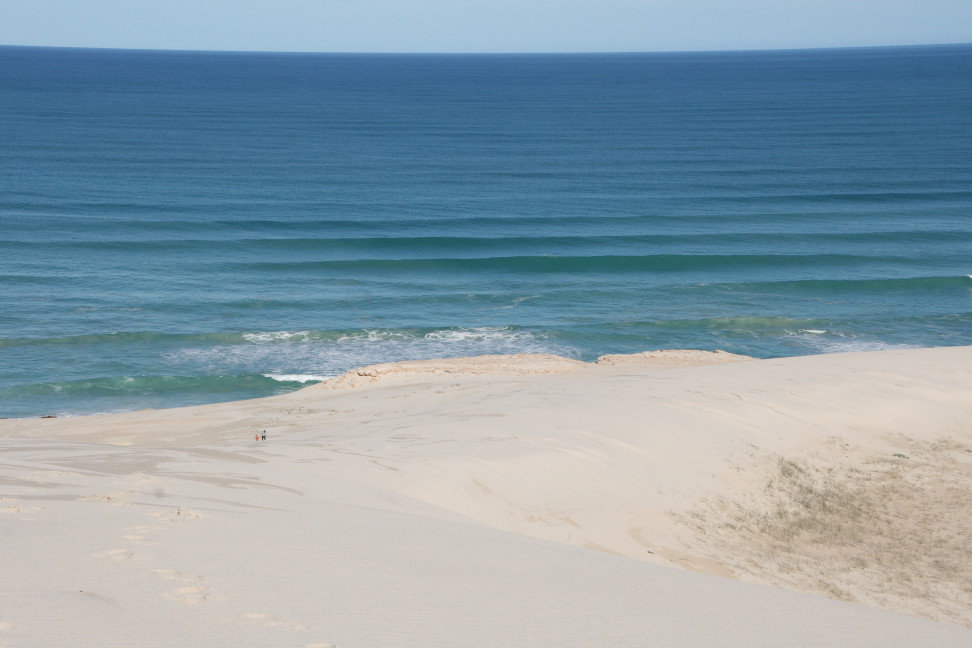 And suddenly we saw a whale, no two, in the end we saw three mothers with their babies swimming side by side. The small baby whales were “sailing” and “lobtailing”, terms we had learned the days before from Hermanus’ Ken “the Whale man”. Sailing means the whale sticks out the tail straight out of the water for a longer time and lobtailing means he’s splashing the tail continously on the water (that’s how I saw them in the first place).
And suddenly we saw a whale, no two, in the end we saw three mothers with their babies swimming side by side. The small baby whales were “sailing” and “lobtailing”, terms we had learned the days before from Hermanus’ Ken “the Whale man”. Sailing means the whale sticks out the tail straight out of the water for a longer time and lobtailing means he’s splashing the tail continously on the water (that’s how I saw them in the first place).
Amazing to see them so close to the coast all next to each other.
As we learned in Hermanus:
- Southern Right Whales gestation period is about a year.
- Baby whales upon birth are up to 6m long and weigh about a ton!
Sometimes, another whale helps giving birth as kind of “Midwife”. - Being mammals, the new-born are being milked.
Since they have stiff lips and bartleens, the babies cannot suck. Rather the mother presses a rich, very fatty milk (of tooth-paste like consistency) into the baby’s mouth. She feeds about 600 liter of this “milk” per day! - With this diet a baby whale grows about 3cm per day!
And they are being nursed for about one year. - The mother will stay solo for about another year before becoming pregnant again.

